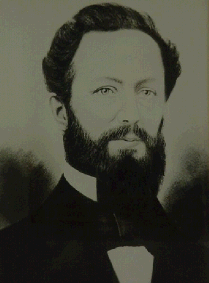William Temple (governor)
| William Temple | |
|---|---|
 |
|
| Member of the U.S. House of Representatives from Delaware's At-large district |
|
|
In office March 4, 1863 – May 28, 1863 |
|
| Preceded by | George P. Fisher |
| Succeeded by | Nathaniel B. Smithers |
| 35th Governor of Delaware | |
|
In office May 6, 1846 – January 19, 1847 |
|
| Preceded by | Joseph Maull |
| Succeeded by | William Tharp |
| Member of the Delaware Senate | |
|
In office January 7, 1849 - January 2, 1855 |
|
| Member of the Delaware House of Representatives | |
|
In office January 7, 1845 - May 7, 1846 |
|
| Personal details | |
| Born |
February 28, 1814 Queen Anne's County, Maryland |
| Died | May 28, 1863 (aged 49) Smyrna, Delaware |
| Political party |
Whig Democratic |
| Spouse(s) | Sarah Ann Ringgold |
| Residence | Smyrna, Delaware |
| Occupation | merchant |
| Religion | Episcopalian |
William Temple (February 28, 1814 – May 28, 1863) was an American merchant and politician from Smyrna, in Kent County, Delaware. He was a member of the Whig Party, and later the Democratic Party, who served in the Delaware General Assembly, as Governor of Delaware, and as U.S. Representative from Delaware. He is the youngest governor to serve in Delaware in all of its history.
Temple was born in Queen Anne's County, Maryland, the son of George Temple. The Temples had lived in the area since the mid-1700s. Templeville, on the borders of Queen Anne and Caroline counties and near the Maryland-Delaware line, is most likely named for the Temple family. William had five brothers and a sister. At the age of 18 he moved to Smyrna, Delaware and began his work as a merchant there. He married Sarah Ann Ringgold, daughter of William Ringgold of Kenton, in 1838 and they had three children, Sarah Louisa, Emma Frances, and William George. Both his daughters died as infants, and his wife, Sarah, died in 1851 at 33 years of age. It is believed they lived at the northeast corner of Main and Mt. Vernon Streets and were members of St. Peter's Episcopal Church in Smyrna.
Throughout the 19th century Delaware politics was characterized by a conservative downstate, agrarian and small business majority, in opposition to a Wilmington based industrialist minority. This majority was led into the Whig Party by John M. Clayton, but when that party broke up over the issue of slavery, generally moved over to a conservative Democratic Party. As the sectional issues intensified with the coming of the Civil War, this majority became impossibly conflicted between its certain loyalty to the Union and its equally certain view that decisions about property, including slaves, belonged with the states. The result was first an effort by many to find a non-existent middle ground, and then, with a much diminished majority, entry into constant and bitter conflict with the Republican minority centered in Wilmington and supported by the Federal government.
...
Wikipedia
